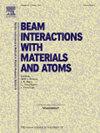欧洲具有潜在闪速剂量照射的VHEE设施:透视图和剂量率参数化
IF 1.4
3区 物理与天体物理
Q3 INSTRUMENTS & INSTRUMENTATION
Nuclear Instruments & Methods in Physics Research Section B-beam Interactions With Materials and Atoms
Pub Date : 2025-05-17
DOI:10.1016/j.nimb.2025.165752
引用次数: 0
摘要
极高能量电子(VHEE)作为一种潜在的癌症治疗方法,与FLASH放射治疗相结合,具有潜在的减少副作用的潜力,正引起人们的极大兴趣。本研究回顾了欧洲的VHEE设施,它们的FLASH能力和在放射生物学研究中的应用,研究目标:1。通过蒙特卡罗光束建模和拟合分析函数来确定FLASH的能力。评估VHEE设施基础设施是否适合放射生物学研究。进行了参数变化研究,以确定剂量对光束尺寸和源到表面距离(SSD)的依赖性。剂量率由表面剂量计算,根据光束线线性缩放。建立了经验剂量率函数,平均误差为<;模拟数据与拟合数据之间相差3%。将剂量率与40 Gy/s的FLASH阈值进行比较。进一步的参数和基础设施考虑提供了每个设施的放射生物学实验能力的概述,为研究人员提供了设计和规划未来VHEE-FLASH实验的有用资源。本文章由计算机程序翻译,如有差异,请以英文原文为准。
VHEE facilities in Europe with the potential for FLASH dose irradiation: Conspectus and dose rate parameterisation
Very High Energy Electrons (VHEE) are gaining significant interest in combination with FLASH radiotherapy as a potential cancer treatment with potential reduction in side effects. This study reviews European VHEE facilities, their FLASH capabilities and applications to radiobiological research, with study objectives:
- 1.Determining FLASH capabilities through Monte Carlo beam modelling and fitting to analytical functions.
- 2.Assessing VHEE facility infrastructure suitability for radiobiological research.
Further parameter and infrastructure considerations provided an overview of each facility’s radiobiological experiment capabilities, providing researchers with a useful resource in designing and planning of future VHEE-FLASH experiments.
求助全文
通过发布文献求助,成功后即可免费获取论文全文。
去求助
来源期刊
CiteScore
2.80
自引率
7.70%
发文量
231
审稿时长
1.9 months
期刊介绍:
Section B of Nuclear Instruments and Methods in Physics Research covers all aspects of the interaction of energetic beams with atoms, molecules and aggregate forms of matter. This includes ion beam analysis and ion beam modification of materials as well as basic data of importance for these studies. Topics of general interest include: atomic collisions in solids, particle channelling, all aspects of collision cascades, the modification of materials by energetic beams, ion implantation, irradiation - induced changes in materials, the physics and chemistry of beam interactions and the analysis of materials by all forms of energetic radiation. Modification by ion, laser and electron beams for the study of electronic materials, metals, ceramics, insulators, polymers and other important and new materials systems are included. Related studies, such as the application of ion beam analysis to biological, archaeological and geological samples as well as applications to solve problems in planetary science are also welcome. Energetic beams of interest include atomic and molecular ions, neutrons, positrons and muons, plasmas directed at surfaces, electron and photon beams, including laser treated surfaces and studies of solids by photon radiation from rotating anodes, synchrotrons, etc. In addition, the interaction between various forms of radiation and radiation-induced deposition processes are relevant.

 求助内容:
求助内容: 应助结果提醒方式:
应助结果提醒方式:


